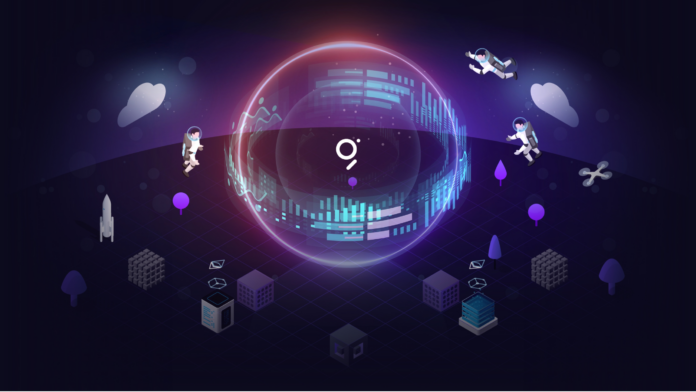The Graph is a decentralized indexing system that simplifies decentralized application (DApp) development on the blockchain. It serves as an open-source protocol hosted on the Ethereum blockchain, designed for indexing and querying, similar to how Google indexes and retrieves information from the internet.
The Graph collects, organizes, and stores data from various blockchain networks, making it searchable and accessible to users. Instead of relying on centralized servers, it leverages a network of participants who operate nodes and contribute to the indexing process. These nodes work together to index and organize data according to predefined rules and subgraphs.
The Graph plays a crucial role in DApp development by providing developers with an efficient and reliable way to access and query data from blockchain networks. By utilizing The Graph, developers can save time and resources by leveraging pre-indexed data, enabling them to focus on creating innovative and engaging applications.
One of The Graph’s primary functions is to collect and organize data from various blockchain networks, acting as a bridge between these networks and DApp developers. Its indexing mechanism allows for efficient data retrieval, enhancing the overall efficiency of DApp development.
The Graph indexes data from blockchain networks using subgraphs, which are open-source APIs defining how data should be organized within the global blockchain graph. Developers can create their own subgraphs or use existing ones to index specific data sets and make them available for querying.
Once data is indexed, The Graph enables users to query and retrieve specific information from blockchain networks. Users can use the Graph Explorer, a user-friendly interface, to search for and retrieve data based on their requirements, simplifying the process of retrieving relevant data for DApp development.
The Graph can be seamlessly integrated with other blockchain applications, expanding its functionality and enhancing the overall user experience. Developers can utilize The Graph’s infrastructure and indexing capabilities to access data from multiple blockchain networks and build innovative decentralized applications that leverage the power of various blockchain ecosystems.
The Graph’s decentralized network is powered by blockchain technology, ensuring that data retrieval and indexing processes are secure, transparent, and tamper-proof. Leveraging the consensus mechanisms of blockchain networks, The Graph ensures the accuracy and integrity of indexed data, providing users with a reliable source of information.
As a decentralized indexing system, The Graph enhances security and transparency in the DApp development landscape by removing reliance on centralized servers, eliminating single points of failure, and reducing the risk of data manipulation or censorship. The transparent nature of blockchain technology ensures that all transactions, including data indexing and retrieval, can be audited and verified by anyone.
The Graph plays a vital role in the decentralized finance (DeFi) ecosystem. DeFi applications rely on timely and accurate data from blockchain networks to enable various financial transactions, such as lending, borrowing, and trading. The Graph’s indexing capabilities provide DeFi applications with access to real-time data, enhancing the efficiency and reliability of these financial operations.
Non-fungible tokens (NFTs) have gained immense popularity, and The Graph has emerged as a crucial tool for NFT developers and enthusiasts. By indexing and organizing data related to NFTs, The Graph enables users to easily search and discover NFTs based on specific criteria, such as artist, rarity, or collection, enhancing the overall user experience in NFT marketplaces.
GRT (Graph Token) is the native currency of The Graph ecosystem. Users need to pay a certain amount of GRT tokens to make queries and retrieve data from the indexed subgraphs, ensuring the sustainability and incentivization of the network as node operators are rewarded with GRT tokens for indexing and processing queries.
Users can earn GRT tokens by participating in The Graph’s network as node operators, contributing their computing power and resources to the network. These tokens can then be used to pay for queries or traded on cryptocurrency exchanges, with their value influenced by market supply and demand dynamics.
Subgraphs are open-source APIs defining how data should be organized within the global blockchain graph. They act as building blocks of The Graph’s indexing system, allowing developers to create specific subgraphs for indexing and querying data based on their requirements. Subgraphs provide APIs that define how data is organized and searchable within The Graph’s ecosystem, enabling efficient and targeted data retrieval, benefiting both developers and users.
GraphQL, a query language for APIs, is used by The Graph to efficiently describe, retrieve, and manipulate data. It allows developers to request specific data and define the structure of the response they need, reducing bandwidth and processing requirements and ensuring a seamless and user-friendly experience when querying data within The Graph ecosystem.
The Graph finds significant use in DeFi, where it provides accurate and up-to-date data for token prices, liquidity pools, lending rates, and more. It also benefits NFTs by indexing and organizing data related to these tokens, enhancing usability and accessibility in NFT marketplaces.
The Graph was launched in 2018 to simplify data retrieval for DApp development. It was initially developed by Graph Protocol Incorporation, which later rebranded to Edge & Node, emphasizing a broader vision in the Web3 ecosystem beyond indexing and querying.
Users can access The Graph through the Graph Explorer, create and manage their subgraphs, buy and sell GRT tokens on cryptocurrency exchanges, and integrate it with other DApp development tools. The Graph’s decentralized indexing protocol, community-driven governance, improved security, and transparency make it a robust and scalable solution for DApp development.
In conclusion, The Graph revolutionizes DApp development by simplifying data retrieval and organization, enhancing security, and improving transparency. Its integration with blockchain technology empowers DeFi, NFTs, and various blockchain applications. GRT tokens facilitate queries, and subgraphs provide efficient data organization. GraphQL ensures flexible data querying, and The Graph’s history shows its commitment to evolving in the Web3 ecosystem, making it a crucial infrastructure component for DApp development.
















